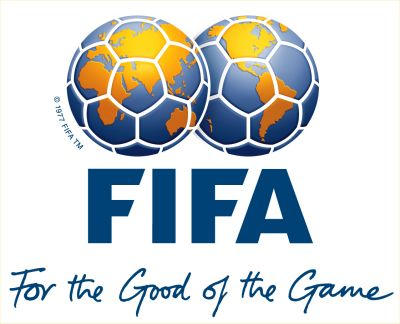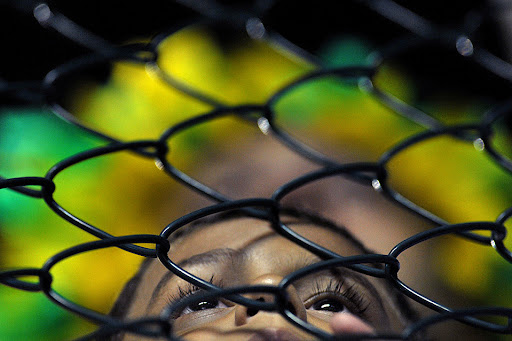
FIFA SPECIAL DEVELOPMENT PROJECTS.
Taking Part and Playing
The FIFA Grassroots Programme has now become a key component of FIFA's development portfolio. The member associations have enthusiastically implemented the programme world-wide.


The associations have fully grasped FIFA's message: grassroots football is the basis for the deveelopment of national football. Children are encouraged to play football and the pleasure and positive values of the sport are transmitted to them. Grassroots football is therefore a top priority for associations in which football is still in its infancy.
In Asia in particular, most associations now run grassroots programmes with FIFA's assistance. The associations in Africa and the CONCACAF region are also active in this area. The regional seminars organised by FIFA in Turkmenistan, Malaysia and Jordan for the Asian region, in Tunisia for Africa and in Trinidad and Tobago for CONCACAF provided valuable start-up assistance. In addition to training for regional and local instructors who are to form part of a world-wide network together with the FIFA instructors, these seminars provide the associations with beneficial background knowledge and information on how to receive support from FIFA to carry out their projects.

In October last year, the UN General Assemmbly once again acknowledged the importance of using sport as a means to promote education, health, development and peace and passed resolution A/65/L.4 that calls upon UN Member States, the UN system, sport-related organisations, federations and associations, athletes and the media, civil society and the private sector "to collaborate with the United Nations Office of Sport for Development and Peace (UNOSDP) to promote greater awareness and action to foster peace and accelerate the attainment of the Millennium Development Goals through sport-based initiatives and promote the integration of sport for development and peace in the development agenda."

NGLS: To what extent have NGOs and other civil society organisations contributed to these achievements?
The NGOs does not directly implement projects. This is not in their mandate. What they do, is help build the Sport for Development and Peace movement. They do this by acting as a facilitator, bringing actors together and providing these actors with the support that they need in order to mobilize resources and properly engage in the field.
Helping the associations to help themselves is one of the objectives of the programme, and the Central Asian associations have embraced this principle, showing initiative by starting their own projects after the seminar. FIFA provides support in the form of important equipment such as balls, teaching aids and mini goals for tournaments, festivals, championships and training sessions, for boys and girls aged between 6 and 12. FIFA provided almost USD 2 million worth of equipment in 2010, a quarter which was allocated to grassroots programmes run independently by the associations.


Building on Success
The success of the Goal Programme continued unabated for FIFA and the member associations in 2010, with 504 projects funded to date. The Goal Bureau approved another 83 projects last year. Numerous other projects were also carried out world-wide.
The first of two Goal Programme projects was in my homeland, New Zealand back in 2003 and 2009 respectively.
Football is the most popular sport in the 5 - 17 age group in New Zealand. However, the media (television, radio, newspapers) concentrate on the more traditional New Zealand pastimes of rugby union and cricket. In 1982, the national team qualified for the FIFA World Cup in Spain, and, having won the continental championship, represented Oceania at the FIFA Confederations Cup in 1999 (Mexico) and 2003 (France). The U-17 team qualified for the FIFA U-17 World Championship in 1997 (Egypt) and automatically as hosts in 1999. However, New Zealand has not produced many international stars. The name of just one player has any true meaning, especially in Europe: Wynton Rufer. He played for many years in Switzerland and Germany, before returning to New Zealand to coach the Football Kings in Auckland and help develop football in his home country. Today, Rufer has a range of varied duties, including membership of the FIFA Football Committee and runs his own soccer academy...

The Goal project
New Zealand had been on the waiting list of beneficiaries of the Goal Programme for quite a while. Plans for association headquarters had existed for a long time but it proved practically impossible to find a suitable plot of land in the area of Auckland. On 3 December 2006, the Goal Bureau granted an alternative proposal - for completion by mid-2007 - to lay an artificial turf pitch at Auckland's North Harbour Stadium, where New Zealand play their most important international matches. The new playing surface was officially inaugurated on 5 May 2007.



Use of FAP funds
Financing of Goal project
Project
Artificial turf pitch at North Harbour Stadium in Auckland
Project approved on
3 December 2006
Status
Opened on 5 May 2007
Financed by
Goal USD 400,000 Other sources USD 2,500,000 Total cost USD 2,900,000
The second Goal project
New Zealand Football wishes to launch a development programme involving the construction of regional technical centres in several phases over a number of years. To this end, on 1 December 2009 the Goal Bureau approved a project to fund the construction of an artificial turf pitch in Christchurch on the South Island. It is expected that the possibility of organising training and competitions in strategic areas will develop football practice in the southern regions of the country. Changing rooms and floodlighting will be added at a later stage.

Use of FAP funds
Financing of Goal Project
Project
Construction of an artificial turf pitch in Christchurch
Project approved on
1 December 2009
Status
Implementation
Financed by
Goal USD 400,000 Public funds USD 1,140,218 Total cost USD 1,540,218
However, the C.A.P.I.T.A.L. of soccer here in New Zealand, is the C.A.P.I.T.A.L. city of our country...WELLINGTON, says Who?....says ME!
The Goal Programme is one of the most important development initiatives in the world of football. There is no other development funding programme on a similar scale, either in terms of investment volume or the numner of projects and associations supported. In October 2010, the Goal Bureau approved a further 83 projects, steering the programme in a new direction.
The focus is on extending and modernising first and second Goal projects. Some association headquarters and technical centres built as part of the Goal Programme are now more than 10 years old and are in need of renovation or expansion (I wonder if NZ ever had their technical centre constructed?).
The Goal Football projects also went from strength to strength in 2010, with nine such projects approved, IVAN! in Asia, Europe and Oceania. These projects provide associations with financial and professional assistance to establish national football schools, optimise their technical centres and develop young players, especially for the national youth teams.

Junior All Whites (U-20).
Having supported more than 500 projects over 12 years, FIFA decided to take stock of the situation, conducting a large-scale survey among its member associations aimed at identifying the successes and limitations of the individual projects with a view to further improving the programme. The results of the survey and the overall conclusions will be presented to the Goal Bureau this.
Cheers.
No comments:
Post a Comment